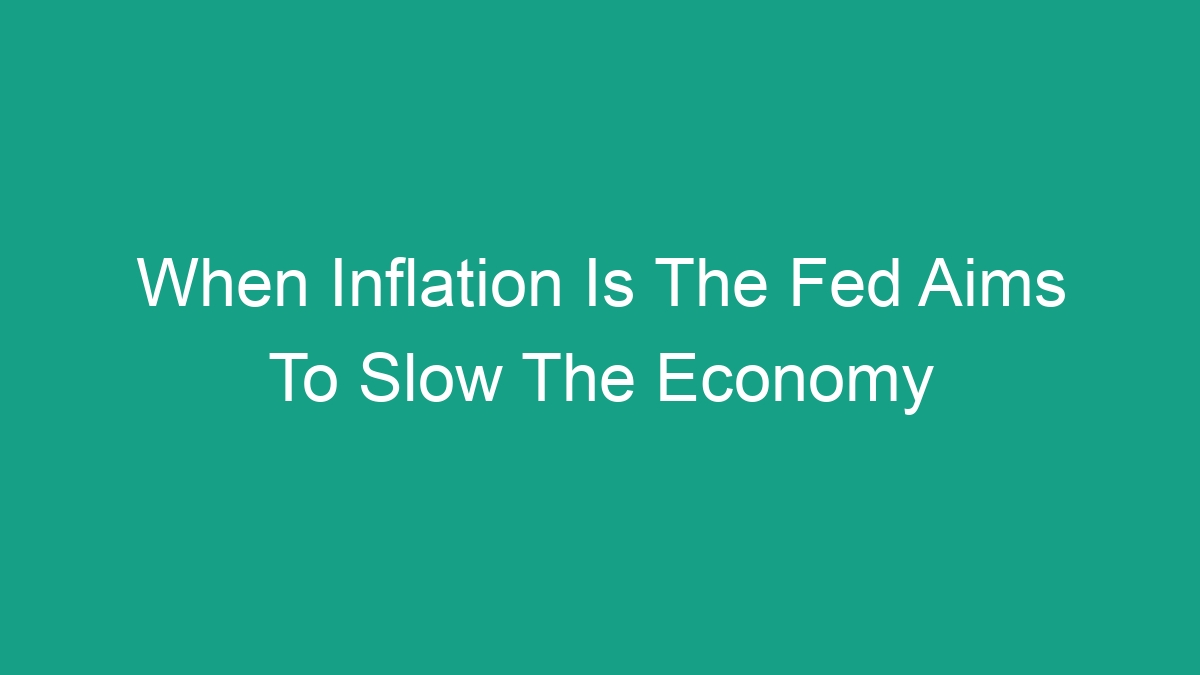
When inflation accelerates, the Federal Reserve often aims to slow the economy to prevent prices from rising too quickly. In this article, we will explore the relationship between inflation and the Federal Reserve’s monetary policy, as well as the tools the Fed uses to achieve its economic goals.
The Relationship Between Inflation and the Federal Reserve
Inflation refers to the rate at which prices for goods and services rise over time. When inflation is high, the purchasing power of a currency decreases, leading to a decrease in the standard of living for consumers. The Federal Reserve, often referred to as the Fed, is the central bank of the United States and is responsible for regulating the country’s monetary policy.
The Fed aims to achieve its dual mandate of price stability and maximum sustainable employment. When inflation rises above the Fed’s target rate, the central bank may take action to slow the economy. This is done to counteract the upward pressure on prices and prevent the economy from overheating.
Tools Used by the Federal Reserve
The Fed has several tools at its disposal to slow the economy and combat inflation. These tools include:
- Interest Rates: One of the primary tools used by the Fed is the manipulation of interest rates. By raising the federal funds rate, the Fed can make borrowing more expensive, which can dampen consumer spending and business investment. This effectively slows down economic activity and can help to curb inflationary pressures.
- Open Market Operations: The Fed can also conduct open market operations by buying or selling government securities on the open market. By purchasing securities, the Fed injects money into the economy, while selling securities drains money from the system. This can influence the level of reserves in the banking system, which in turn affects the lending and borrowing behavior of banks and consumers.
- Reserve Requirements: The Fed can also adjust reserve requirements for banks, which dictates the amount of funds that banks are required to hold in reserve. By increasing reserve requirements, the Fed can limit the amount of money that banks have available for lending, which can reduce overall economic activity.
Impact on Financial Markets and Investments
When the Fed takes action to slow the economy in response to rising inflation, it can have a significant impact on financial markets and investments.
Stock Market: Higher interest rates can lead to lower stock prices, as higher borrowing costs for companies can dampen corporate profits and reduce investor appetite for riskier assets.
Bond Market: Rising interest rates can cause bond prices to fall, as newly issued bonds typically offer higher yields to attract investors in a higher-rate environment.
Currency Markets: Changes in monetary policy can also affect the value of the US dollar in relation to other currencies, impacting trade balances and global economic competitiveness.
FAQ
How does the Federal Reserve measure inflation?
The Fed uses the Personal Consumption Expenditures (PCE) price index to measure inflation. This index tracks variations in the prices of goods and services purchased by consumers.
What is the Fed’s target inflation rate?
The Fed’s long-run target for inflation is 2%. This target is considered consistent with its dual mandate of price stability and maximum sustainable employment.
How does the Fed’s policy affect consumer borrowing and savings?
When the Fed raises interest rates, borrowing becomes more expensive, which can lead to higher costs for mortgages, auto loans, and credit cards. Conversely, higher rates can lead to higher yields on savings accounts and other interest-bearing investments.
What are the potential risks of the Fed’s efforts to slow the economy?
One potential risk is that the Fed could overshoot its target and inadvertently trigger a recession. Additionally, higher interest rates can increase the servicing costs of existing debt, putting strain on heavily indebted individuals and businesses.
How do global economic factors influence the Fed’s decision-making?
The Fed takes into account a wide range of global economic factors, including exchange rates, international trade, and geopolitical events, when making its monetary policy decisions. The interconnected nature of the global economy means that developments in other countries can have significant implications for the US economy and the Fed’s policy choices.



